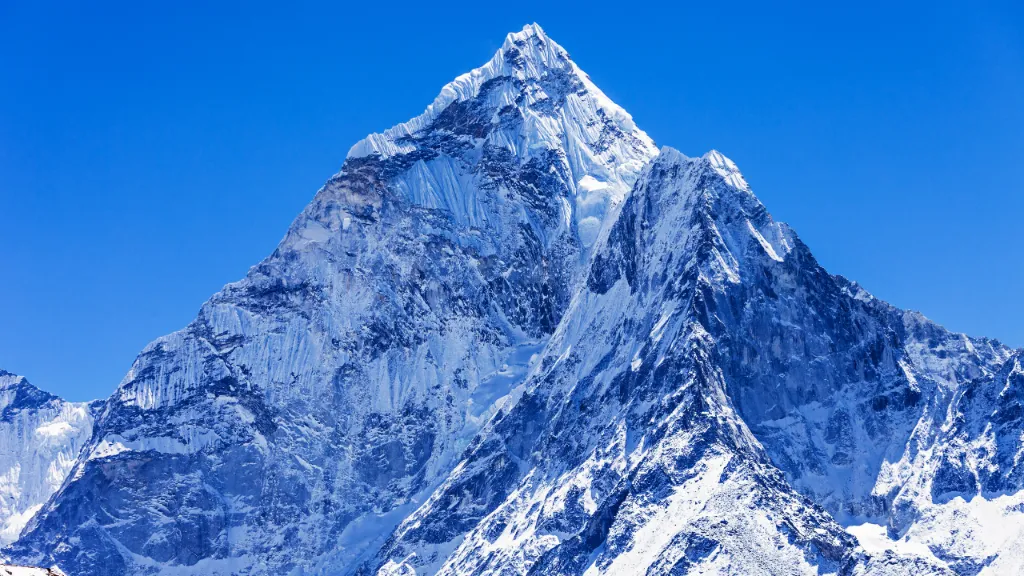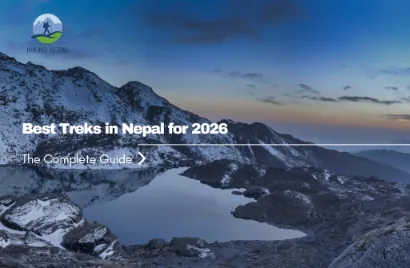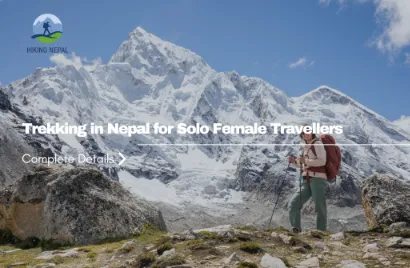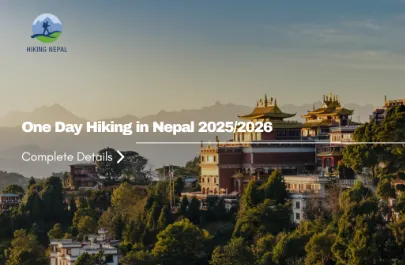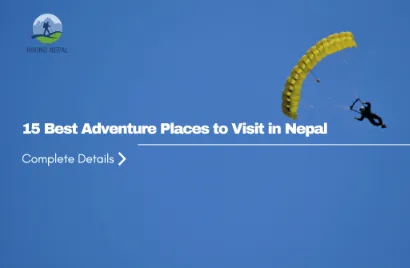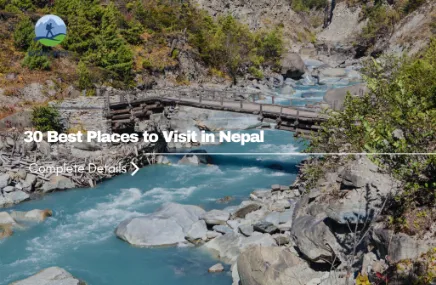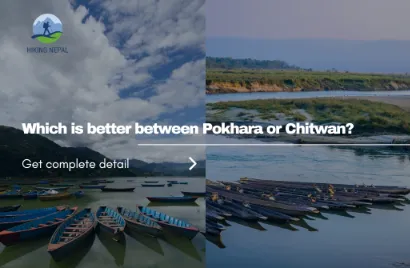Nepal is the world’s trekking capital. Every year, people from everywhere come to walk its trails, meet mountain people, and stand close to peaks that take your breath away. If you are planning a big trek in 2026, this guide is made for you. It lays out the best treks across Nepal, from classic routes to quiet, off-the-beaten-path adventures. For each trek, you will find the core facts, what to expect on the trail, logistics, acclimatization notes, packing tips, and why we at Hiking Nepal recommend it.
This is a practical and honest guide, designed for first-time trekkers, repeat travelers, and anyone looking to plan a safe and unforgettable trip to the Himalayas in 2026.
Quick Picks: the treks covered in this guide
Everest Base Camp (EBC)
Three High Passes, Everest Region
Gokyo Lakes and Cho La Pass
Annapurna Circuit
Annapurna Base Camp (ABC)
Mardi Himal Trek
Poon Hill, Ghorepani
Manaslu Circuit
Upper Mustang
Upper Dolpo
Langtang Valley
Gosaikunda and Langtang-Gosainkunda
Kanchenjunga Circuit
Makalu Base Camp
Mera Peak (trek + climb)
Island Peak (trek + climb)
Pikey Peak
Dhaulagiri Circuit
Tsum Valley
How to use this guide
Each trek section includes:
- A short overview
- Difficulty and fitness required
- Typical itinerary and days required
- Best season to go
- Permits and fees you need to know about
- Transport and access notes
- Key highlights and photography tips
- Safety and acclimatization advice
- Who should pick this trek?
Ultimately, you will find essential packing items, safety reminders, and practical checklists to make planning easier and more efficient.
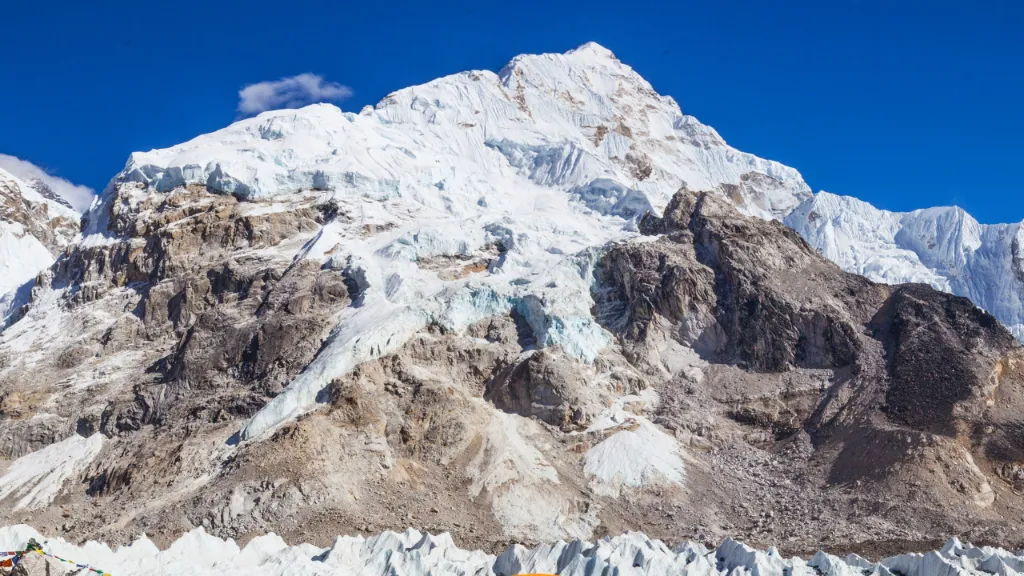
1. Everest Base Camp (EBC): The Classic
Overview
Everest Base Camp is the classic Himalayan trek. The route is crowded during peak season, but it is also well-served. Along the path, you meet Sherpa villages, Buddhist monasteries, and a chain of lodges with hot tea and stories. The main attraction is the stunning view of Everest, Lhotse, Nuptse, and the Khumbu icefall. Kala Patthar gives the most dramatic panorama of Everest at sunrise.
Difficulty
Moderate to hard. The total number of walking days and the high altitude make it physically demanding, even though the trail itself is not technically challenging.
Typical itinerary
12 to 14 days from Lukla return to Lukla, plus flights and buffer days. Key stops: Lukla, Phakding, Namche Bazaar, Tengboche, Dingboche, Lobuche, Gorakshep, Everest Base Camp, Kala Patthar.
Best season
Autumn (September to November) and spring (March to May). Clear skies and stable weather make these months ideal for outdoor activities.
Permits
Sagarmatha National Park permit and TIMS card. Your operator usually arranges these.
Access
Fly to Lukla from Kathmandu. Please note that Lukla flights are subject to weather conditions. Many operators now use Ramechhap as an alternate departure in some seasons.
Highlights
Sherpa culture in Namche, Tengboche Monastery, iced landscapes near Gorakshep, sunrise from Kala Patthar.
Safety and acclimatization
Follow a gradual ascent. Spend extra nights at Namche and Dingboche for proper acclimatization. Watch for symptoms of AMS and act immediately.
Who should do it
First-timers who want the Everest experience without technical climbing. You should be fit and prepared for cold nights and long days.
2. Everest Three High Passes: The Challenge
Overview
This route links the Everest Base Camp trail with three high passes: Kongma La, Cho La, and Renjo La. It is longer and higher than the classic EBC trail, offering more remote views of the peaks and glacial lakes.
Difficulty
Hard. Technical snow or ice can appear on the passes, especially at higher altitudes.
Typical itinerary
18 to 21 days. Expect long days and harder walking above 5,000 meters.
Best season
Late spring and autumn. Snow and pass conditions are most stable then.
Permits
Sagarmatha National Park permit and TIMS. Check updated rules with your operator.
Access
Fly into Lukla and start the route from there.
Highlights
Remote mountain panoramas, less crowded high camps, views that most trekkers never see.
Safety
Passes may require the use of crampons and an ice axe, depending on the conditions. Use an experienced guide and be ready to turn back if the passes are unsafe.
Who should do it
Experienced trekkers with strong fitness and prior high-altitude experience.
3. Gokyo Lakes and Cho La Pass: Turquoise Lakes and Alpine Drama
Overview
Gokyo offers turquoise glacial lakes and panoramic views from Gokyo Ri. Combined with Cho La Pass, this route feels wild and remote.
Difficulty
Moderate to hard. Cho La Pass can be steep and rocky. Snow may cover sections in the shoulder seasons.
Typical itinerary
12 to 15 days if starting and ending in Lukla.
Best season
Autumn and spring.
Permits
Sagarmatha National Park permit and TIMS.
Access
Fly Lukla, trek via Namche to Gokyo.
Highlights
Mirror-like lakes, Gokyo Ri sunrise, the view of four 8,000-meter peaks in one sweep.
Safety
Cho La involves steep scree sections and possible snow; trek with a guide and check the conditions.
Who should do it
Trekkers seeking dramatic scenery and solitude, as opposed to the EBC crowd.
4. Annapurna Circuit: The Classic Circle
Overview
The Annapurna Circuit loops around the Annapurna massif and crosses Thorong La Pass. It blends landscapes, cultures, and biodiverse zones, from subtropical lowlands to alpine deserts.
Difficulty
Moderate to hard. Thorong La is the major altitude challenge at 5,416 meters.
Typical itinerary
14 to 18 days, depending on start and finish points. Some walk fewer days by using jeep sections.
Best season
The monsoon and spring. The monsoon months bring landslides and leeches to the the lower sections.
Permits
ACAP permit and TIMS card. Carry ID and printouts.
Access
Drive or fly to Pokhara, then take a bus to Besishahar or Bhulbhule to begin the trail.
Highlights
Thorong La sunrise, Muktinath Temple, the Kali Gandaki Gorge, and local Gurung and Thakali cultures.
Safety and acclimatization
Add acclimatization days in Manang. Don't rush up Thorong La.
Who should do it
Trekkers seeking variety in landscapes and a deep cultural immersion experience.
5. Annapurna Base Camp (ABC): Close-Up Peaks
Overview
ABC takes you into the heart of the Annapurna Sanctuary. The final camp is situated beneath towering walls of snow and rock. It is scenic, shorter than the whole circuit, and highly rewarding.
Difficulty
Moderate. The trail is steady and well-serviced.
Typical itinerary
7 to 10 days starting from Nayapul or Pokhara.
Best season
Autumn and spring.
Permits
ACAP permit and TIMS card.
Access
Drive from Pokhara to Nayapul and trek into the sanctuary via Ghorepani, Chhomrong, and Bamboo.
Highlights
360-degree mountain views, local teahouses, and hot springs near Jhinu Danda.
Safety
Suitable for first-timers if you allow time to acclimatize. Bring warm layers for nights.
Who should do it
Those seeking high alpine scenery on a shorter schedule than the circuit.
6. Mardi Himal Trek: Quiet and Close
Overview
Mardi Himal is a quieter neighbor of Annapurna, offering close views of Machapuchare—the trail threads through rhododendron forests and quiet lodges.
Difficulty
Moderate. Some steep pitches to the high camp.
Typical itinerary
4 to 6 days.
Best season
Spring for rhododendrons, autumn for clear skies.
Permits
ACAP permit.
Access
Drive from Pokhara to Kande or Phedi.
Highlights
Panoramic views, fewer trekkers, sunrise silhouettes of Fishtail peak.
Safety
Steep sections near High Camp require attention. Nights are cold.
Who should do it
Those who want a short walk with big views and less traffic.
7. Ghorepani Poon Hill: Beginner Friendly
Overview
Poon Hill is the most popular short trek for stunning sunrise views over the Annapurna and Dhaulagiri ranges. The trail is short and accessible.
Difficulty
Easy to moderate.
Typical itinerary
3 to 5 days.
Best season
Autumn and spring.
Permits
An ACAP permit is required.
Access
Drive from Pokhara to Nayapul or Tikhedhunga.
Highlights
Sunrise from Poon Hill, rhododendron forests, Gurung villages.
Safety
Suitable for families and beginners. Watch for crowded viewpoints in peak season.
Who should do it
First-timers, families, or anyone short on time.
8. Manaslu Circuit: Remote and Rewarding
Overview
The Manaslu Circuit encircles Mount Manaslu and culminates at Larkya La. It offers Tibetan-style culture, fewer crowds, and raw landscapes.
Difficulty
Hard. The pass sits at 5,160 meters.
Typical itinerary
14 to 18 days.
Best season
Autumn and spring.
Permits
A restricted area permit for Manaslu is often arranged through licensed operators.
Access
Drive from Kathmandu to Arughat or Sotikhola to begin your walk.
Highlights
Tsum Valley side trips, pristine villages, prayer flags over passes.
Safety
Permits are strict. Travel only with a registered company and guide.
Who should do it
A trekker who wants less crowds and a less intense cultural atmosphere.
9. Upper Mustang: The Hidden Kingdom
Overview
Upper Mustang, a former kingdom, is situated in a rain-shadow pocket that resembles a Himalayan desert. Its red cliffs, caves, and ancient Tibetan culture make it a unique destination.
Difficulty
Moderate. High altitude is a factor, but the trail profile is easier than that of some passes.
Typical itinerary
10 to 14 days if starting at Jomsom, or longer if you include explorations of Lo Manthang.
Best season
Spring and autumn. Winter mornings are cold and dusty.
Permits
Mustang is a restricted area. Permits are expensive and require documentation and fees. Only authorized operators can get them.
Access
Fly or drive to Jomsom, then trek east to Lo Manthang. Helicopter options exist for some routes.
Highlights
Lo Manthang, a walled town, ancient gompas, and a unique landscape.
Safety
Respect local rules; the region is culturally sensitive. Drink less local alcohol at altitude.
Who should do it
Trekkers who want a cultural desert feel and to see a Tibet-like landscape.
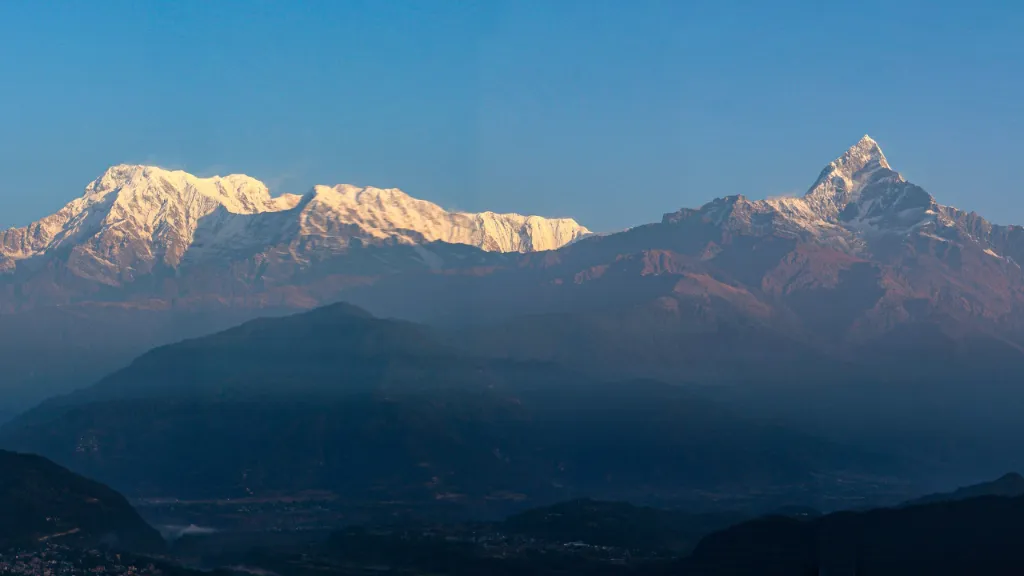
10. Upper Dolpo: Wild and Remote
Overview
Upper Dolpo is a remote, dramatic, and culturally Tibetan region. It was once off-limits and remains one of Nepal’s most remote treks.
Difficulty
Hard. Long days, remote camps, and high passes like Shey La at over 5,000 meters.
Typical itinerary
18 to 24 days.
Best season
Late spring or autumn. Monsoon can make passes impassable.
Permits
Upper Dolpo requires special permits for restricted areas and a registered operator.
Access
Flights to Juphal or long drives to the trailhead, followed by remote trekking.
Highlights
Shey Phoksundo Lake, ancient monasteries, and vast plateaus.
Safety
Be self-sufficient. Medical help is far. Carry robust emergency plans and insurance.
Who should do it
Experienced trekkers who want total wilderness and cultural depth.
11. Langtang Valley: Close to Kathmandu
Overview
Langtang is the nearest high mountain valley to Kathmandu, offering beautiful forested trails, yak pastures, and close cultural exchange with the Tamang communities.
Difficulty
Moderate.
Typical itinerary
6 to 9 days.
Best season
Autumn and spring.
Permits
Langtang National Park permit and TIMS.
Access
Drive from Kathmandu to Syabrubesi, then continue on foot for the remainder of the journey.
Highlights
Langtang Lirung views, Kyanjin Gompa, and cheese making at local settlements.
Safety
Following the 2015 earthquake, the region underwent extensive rebuilding. Check trail conditions and lodge availability.
Who should do it
Those who want a good valley trek without a long travel from Kathmandu.
12. Gosaikunda: Sacred Alpine Lakes
Overview
Gosaikunda is situated within Langtang National Park and is a sacred lake pilgrimage site. The terrain is alpine, and the area is spiritual and scenic.
Difficulty
Moderate to strenuous because of the altitude.
Typical itinerary
4 to 6 days from Dhunche or a longer loop if combined with Helambu.
Best season
Late spring and autumn. The Janai Purnima festival draws pilgrims in August.
Permits
Langtang National Park permit and TIMS.
Access
Drive from Kathmandu to Dhunche and start walking.
Highlights
Gosaikunda Lake, alpine meadows, sunrise over peaks.
Safety
High altitudes, cold nights, and unpredictable weather can change rapidly.
Who should do it
A trekker seeking a short, high-altitude trek with spiritual significance.
13. Kanchenjunga Circuit: Remote Eastern Giants
Overview
The Kanchenjunga region is less traveled. It takes you around the third-highest mountain on Earth and through a variety of landscapes.
Difficulty
Hard. Long approach roads and high passes make this a demanding route.
Typical itinerary
18 to 24 days.
Best season
Late spring and autumn.
Permits
Kanchenjunga is a controlled area with permits. Work with a licensed operator.
Access
Long drive east from the Makalu or Taplejung points. Roads can be slow.
Highlights
Kanchenjunga base views, rhododendron forests, and traditional Limbu and Sherpa villages.
Safety
Remoteness requires strong planning and backup systems.
Who should do it
Experienced trekkers seeking solitude and big mountain views.
14. Makalu Base Camp: Pure High Mountain
Overview
Makalu is one of the wildest base camp treks. It lies in a protected conservation area and is prized for rugged scenery and big Himalayan faces.
Difficulty
Hard. The trail includes river crossings, steep climbs, and remote days.
Typical itinerary
18 to 22 days.
Best season
Autumn and spring.
Permits
Makalu Barun National Park permit and TIMS.
Access
Fly to Tumlingtar or Taplejung and trek into the park.
Highlights
Makalu views, Bharal, and snow leopard habitat, high alpine meadows.
Safety
Remote regions require an experienced guide and careful planning.
Who should do it
Trekker seeking a less-traveled, high-altitude experience.
15. Mera Peak: Trek plus Summit
Overview
Mera Peak is a trekking peak that offers a real summit experience without technical climbing beyond basic ice skills. The summit rewards you with excellent views of Everest and Lhotse.
Difficulty
Challenging. Summit day is long and requires the use of crampons and basic fixed rope experience.
Typical itinerary
15 to 18 days, including acclimatization.
Best season
Autumn and spring.
Permits
Peak climbing permit via Nepal Mountaineering Association, national park permit if applicable.
Access
Fly to Lukla and trek into the Hinku valley or approach from other valleys.
Highlights
Summit experience with panoramic vistas of several 8,000 m peaks.
Safety
Use an experienced climbing guide, practice glacier travel and rescue basics beforehand.
Who should do it
A trekker who wants a non-technical summit of a Himalayan peak.
16. Island Peak: Classic Peaks for Climbers
Overview
Island Peak, also known as Imja Tse, is a popular destination for climbers seeking to add a technical summit to their trek.
Difficulty
Moderate to hard. Technical sections with fixed ropes, exposure, and crevasses.
Typical itinerary
14 to 17 days, usually combined with the EBC route.
Best season
Autumn and spring.
Permits
NMA peak permit, Sagarmatha National Park permit.
Access
Fly to Lukla, base up through Dingboche and Lobuche.
Highlights
Summit ridge, views of Ama Dablam and Everest.
Safety
Requires rope work, crampon skills, and a certified climbing guide.
Who should do it
Trekker with prior mountaineering training or those ready to work with guides.
17. Pikey Peak: Great Views, Low Crowd
Overview
Pikey Peak gives one of the best panoramic views of Everest and the eastern Himalaya with fewer crowds. It is also located near Buddhist cultural sites.
Difficulty
Moderate.
Typical itinerary
4 to 6 days from Bhandar or Phaplu, depending on your start.
Best season
Spring and autumn.
Permits
Local permits and TIMS.
Access
Fly to Phaplu or drive toward the Solukhumbu lowlands.
Highlights
Sunrise over Everest panorama, Sherpa villages, quiet trails.
Safety
Lower traffic than EBC, but still high altitude; acclimatize properly.
Who should do it
Those who want Everest views with more solitude.
18. Dhaulagiri Circuit: Big Mountains, Big Trek
Overview
The Dhaulagiri Circuit encircles the Dhaulagiri massif and crosses the French Col. It is a remote, challenging route that offers close views of massive walls.
Difficulty
Hard to very hard. High passes, glaciers, and remote conditions.
Typical itinerary
18 to 22 days.
Best season
Autumn and spring.
Permits
Local permits and possibly national park permissions.
Access
Drive to the trailhead and trek deep into the range.
Highlights
Dhaulagiri North face, high alpine passes, Tibetan-influenced settlements.
Safety
Highly remote, high altitude. Suitable only for experienced trekkers with strong logistical skills.
Who should do it
Trekker who seeks a challenging, technical, and remote Himalayan trek.
19. Tsum Valley: Culture and Calm
Overview
Tsum Valley is a spiritual enclave near Manaslu with a distinct cultural flavor. It is a quieter, culturally rich valley with high passes into Tibet-influenced landscapes.
Difftolty
Moderate tto complex depending on the route.
Typical itinerary
12 to 16 days, depending on the combination with Manaslu circuits.
Best season
Autumn and spring.
Permits
Restricted Area Permit for the Tsum Valley and Manaslu Region.
Access
Drive to Arughat and start the long approach to Soti Khola and beyond.
Highlights
Remote monasteries, ancestral homes, and special local festivals.
Safety
Restricted permits are required; a licensed operator must accompany travel.
Who should do it
Trekker is interested in cultural depth and a quiet valley.
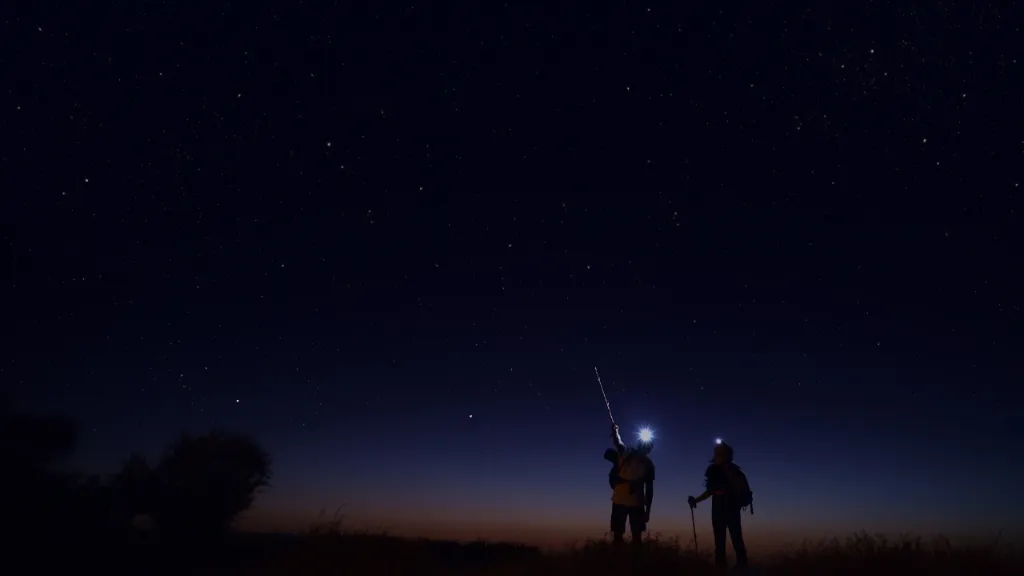
Planning, Safety, and Logistics: The Essentials
Seasons and what they mean
Autumn and spring are the main trekking seasons. Autumn brings clear skies and stable weather, spring brings rhododendron blooms and comfortable temperatures. Monsoon months make many trails slippery and risky below the treeline, but some rain-shadow regions like Mustang stay dry then. Winter is for experienced climbers only on high routes.
Permits and paperwork
Most popular routes need TIMS and national park permits. Restricted regions require special permits and licensed operators. Always arrange permits through your operator or a trusted agent; official entry points validate your paperwork.
Hiring guides and porters
Guides are strongly recommended for restricted areas, high passes, and for non-experienced trekkers. Hiring a porter reduces physical strain, allowing you to enjoy the trail more. Ensure staff are paid fairly and have adequate insurance.
Acclimatization
Never skip acclimatization days. Add rest days at Namche, Manang, or Dingboche, depending on the altitude profile. Know AMS symptoms and plan to descend at the first sign.
Health and insurance
Purchase travel insurance that includes coverage for helicopter evacuation and high-altitude rescue. Bring a first-aid kit, altitude medication (if prescribed), and any personal medications you need.
Communications and money
Mobile networks cover many villages, but not all of them. Consider a satellite option for remote treks if you require constant connectivity. Cash is king on trails; ATMs are rare above Pokhara and Kathmandu.
Packing Essentials: Short checklist
Clothing layers, down jacket, waterproof shell, trekking boots, gaiters, sun hat and sunglasses, gloves, base layers, spare socks, trekking poles, headlamp, reusable water bottle, water purifier or tablets, sleeping bag rated to -10C or lower, personal meds, first aid, sunblock, lip balm with SPF, toiletries, power bank, copies of permits and passport, small amount of local cash.
Responsible trekking: Leave it better than you found it
- Carry out non-biodegradable trash
- Use refillable water bottles and purification to cut plastic waste.
- Use local lodges and workers to support communities.
- Respect local customs and religious sites.
Nepal keeps delivering. In 2026, the country will continue to offer classic, well-maintained routes, as well as quieter, more demanding trails for those seeking solitude and challenge. Your best trek is the one that matches your fitness, time, and curiosity. If you are new to high-altitude trekking, start with Poon Hill or ABC. If you already know your legs, choose Manaslu, Dolpo, or the Three High Passes. For a summit experience, try Mera or Island Peak with a certified guide.
If you need help choosing the right trek, optimizing your itinerary, or arranging permits and guides, please don't hesitate to contact Hiking Nepal. We plan responsibly, hire locally, and prioritize your safety. In the mountains, respect and preparation matter more than bravado.
Safe trails, clear skies, and memorable views. See you on the path.
